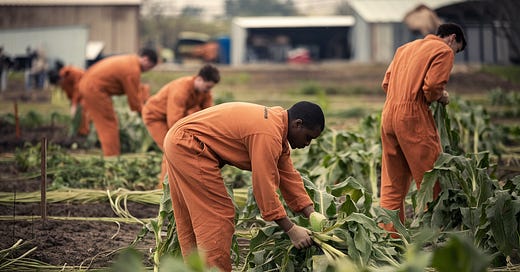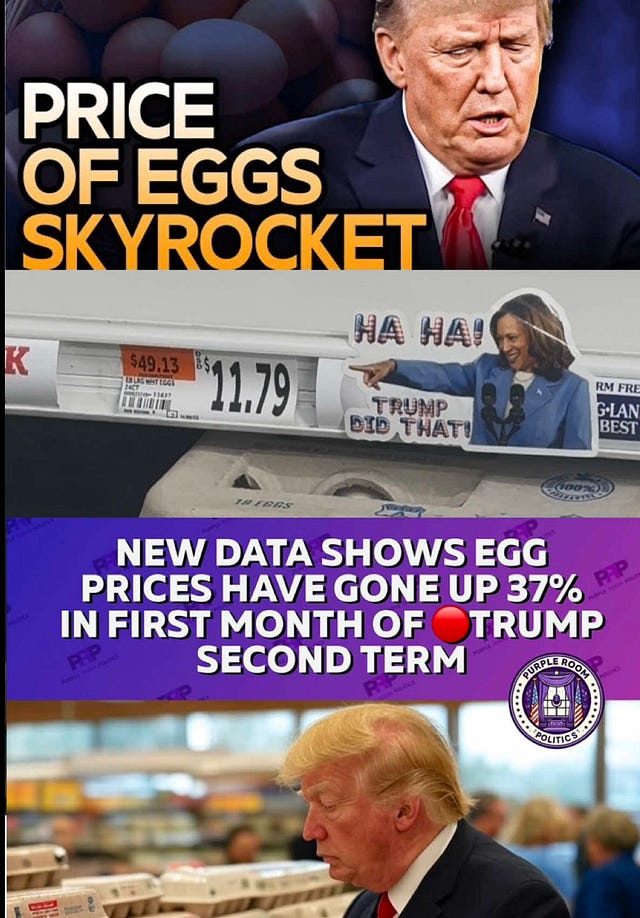The cost of food, particularly staples like eggs, has long been a barometer of social stability. During his campaign, Donald Trump shrewdly weaponized the rising price of eggs as a symbol of economic pressure felt acutely by working-class and poor Americans. It was a message that resonated. But now, as his administration flexes the power of the state in ways that actively undermine food security, it’s clear that the real cost of Trumpism may be measured in empty stomachs and growing unrest.
Let’s break down the three crises converging on America’s food system and the chaos they threaten to unleash.
1. The Labor Crisis in Agriculture
The backbone of North America’s food production is immigrant labor. From fruit-picking to livestock care, the food we eat is often brought to our tables by workers who lack formal status. But under Trump’s revived deportation machine, this invisible workforce is disappearing fast.
Reports from California—a state responsible for a significant share of the continent’s fruits, vegetables, and nuts—indicate farms experiencing up to 75% absenteeism. Anticipated ICE raids, coupled with fear of deportation, are pushing workers underground or out of the country entirely. This labor vacuum spells disaster. Without these workers, crops rot in fields, food prices soar, and supply chains teeter on the edge of collapse.
The Trump administration’s immigration policies, pitched as a strategy to restore "law and order," are instead destabilizing a critical sector of the economy. In California alone, the ripple effects could devastate not just farmers and consumers but the fragile trust that holds the system together.
2. The Silent Spread of Avian Flu
Another storm is brewing in the form of H5N1, or avian flu. The disease has already taken a significant toll on poultry farms, driving up the price of eggs and meat. And yet, instead of mobilizing resources to address this emerging crisis, Trump’s government has opted for catastrophic isolationism.
By withdrawing from the World Health Organization (WHO) and gutting domestic public health measures, the administration is leaving the United States vulnerable to a pathogen that doesn’t respect borders. This is more than negligence—it’s creating the perfect conditions for the mutation and spread of a virus that could wreak havoc on the food supply chain.
Eggs, a staple protein source for millions of Americans, have already become symbolic of the affordability crisis. But if avian flu continues unchecked, we could be looking at shortages that hit the poorest households hardest, deepening inequality and exacerbating unrest.
3. The Hidden Agenda: Profiting from Crisis
Behind the tough-on-immigration rhetoric lies a darker truth: the privatization of human suffering. Public resources for detention and deportation are stretched to their limits, yet the administration continues to funnel people into a sprawling system of private detention facilities. These prisons, operated by for-profit corporations, thrive on bodies and misery.
And it doesn’t stop there. As immigrant labor in agriculture becomes scarcer, the temptation to turn to prison labor looms large. In fact, it’s already happening. California has used prison labor for years to fight wildfires—paying incarcerated workers less than $2 an hour. The idea of replacing migrant farmworkers with incarcerated individuals isn’t just plausible; it’s disturbingly likely.
This system of legalized slavery mirrors America’s darkest chapters, where Black and Brown bodies were commodified for profit. Now, under the guise of law enforcement, the prison-industrial complex is poised to insert itself into agriculture, exploiting labor to maintain the food supply while reaping immense profits.
It’s a grim depiction of a future we must fight to prevent. A future where those imprisoned by the state are forced to toil in the fields to make up for the very labor shortages the state created. A future that reinforces systemic inequality and dehumanization.
Don’t Let Them Go Hungry
History teaches us that food insecurity is a precursor to revolution. When governments fail to feed their people, they eventually face the wrath of those left hungry. In mobilizing the machinery of the state to wage ideological battles, the Trump regime is ignoring the deeper threats to its own legitimacy.
 Tiktok failed to load.
Tiktok failed to load.Enable 3rd party cookies or use another browser
The fundamental truth is this: a hungry populace becomes an angry one. The more the administration prioritizes short-term political theatrics over long-term stability, the closer we inch toward a breaking point. Food is not just sustenance; it is power. When the state fails to protect the food supply, it risks being devoured by the very people it seeks to control.
In the coming months, watch the price of eggs. It’s more than an economic indicator—it’s a harbinger of the future. And if we don’t address these converging crises, the cost of food could become the cost of authority itself.

 Tiktok failed to load.
Tiktok failed to load.Enable 3rd party cookies or use another browser








The additional piece is the gutting of the civil service. When govt bodies associated with regulatory oversight are either gone or nonfunctional, whatever is available for sale increasingly may not meet food safety standards. The future isn't just airborne pathogens but also contaminated food (listeria, e. Coli, etc.)